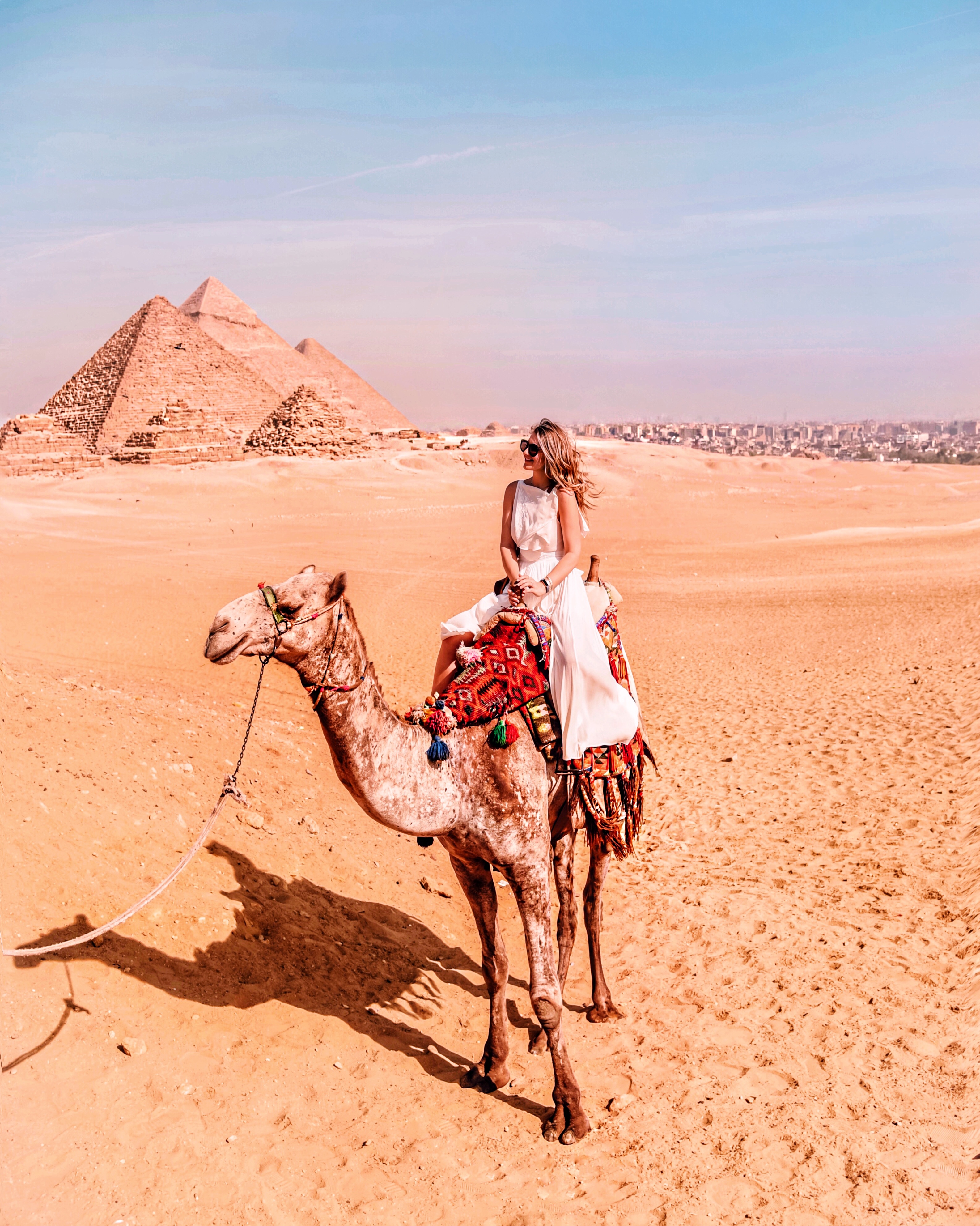
It’s here! I’m so excited to share this Egypt travel guide! I hope it helps everyone who has messaged me on Instagram saying that Egypt is on your bucket list. I’m so glad we went but there are definitely a few things I wish we knew before we visited!
Before booking your flights, I’d strongly recommend reading through this post! If you don’t have time now, pin it or bookmark it and save it for later. This was one of the destinations that I’ve gotten the most questions about. I love how excited you guys are about it! However, I’d definitely recommend reading through the sections below carefully before deciding whether or not this destination is for you.
You can read all my travel guides here to see where else we’ve been! We’ve traveled within the United States, Europe, Asia, and Mexico. They are all very comprehensive with where we ate, stayed, sites, and various travel tips!
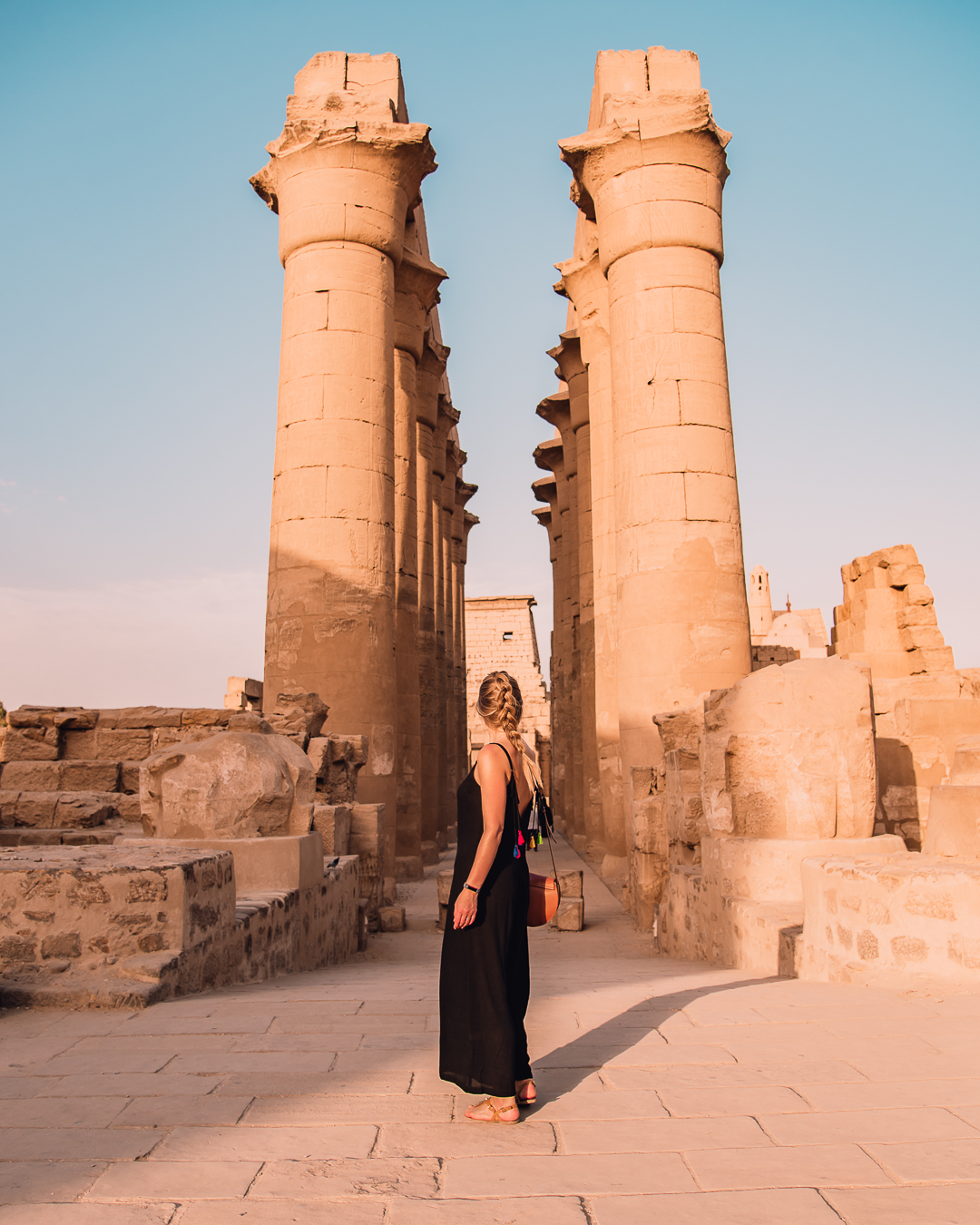
Who is traveling to Egypt for?
Egypt is for the more adventurous traveler. I would not recommend Egypt for your first time out of the country because the culture shock might be a little much. Having been to India, Dubai, and Thailand, the Egyptian culture was probably one of the most forward that I’ve experienced. I had to be on guard more than I have in any other country. As someone who travels a lot and loves Egyptian history, it was worth it.
If you’re relatively new to traveling and Egypt is on your bucket list, give it a few more years until tourism becomes more common. I’d recommend visiting Greece, Ireland, or the Dominican Republic. All have a good balance of relaxation and culture. If you’re surprised as to why the Dominican Republic made that list, read the posts! We were too but we did it the right way!
Is Egypt safe?
This was the most common question I got. For the most part, yes, I felt safe. There were some moments where I was on edge or a little nervous. I think knowing the history of the country made me hyperaware the entire 10 days we were there.
The US Travel Advisory is a Level 2: exercise increased caution. There were places we knew to avoid like the Sinai peninsula except Sharm el Sheikh and Western Egypt due to chances of terrorism. There were x-ray machines at the entrance to every hotel (both good and bad depending on how you look at it) and every historic site or monument. When going through security especially in airports, you will also be patted down. If you’re female, only women can pat you down so sometimes you may have to wait longer for female security personnel to arrive.
Do you need a Visa for Egypt? Are there any passport restrictions?
Yes, you can buy them in the Cairo airport before getting your baggage if you’re traveling from the US. They cost $25 USD and you can get them at the currency exchange or bank before passing through customs. If you’re departing from some countries, you may be required to get a visa before traveling.
Your passport needs to be at least 6 months old and cannot be expiring within the next 6 months.
How do you get around Egypt between cities?
By Plane.
When you’re traveling between cities, the fastest way is to fly. EgyptAir is the most prominent airline in Egypt for short flights within the country. Generally, the flights are about $50-$150 between cities depending on how far in advance you book. We flew EgyptAir for all 4 flights and spent just under $1000 for 2 people (8 flights total and 2 were first class because there were no other seats left on that flight). The airports are relatively small so security is quick. When we flew out of Aswan, the airport wasn’t even open when we arrived 2.5 hours in advance so we ended up waiting 30 minutes for security to open.
Booking EgyptAir online is impossible with a US credit or debit card. In order to book flights, you will need to call the airline and make reservations over the phone. They will email you an authorization form in order to process your credit card at which point, you can book your flights. It wasn’t a huge hassle but it wasn’t as easy as booking a flight on Southwest. Just something to know so you don’t get frustrated and wonder why your online reservation isn’t working!
By Car.
If you can’t fly, hiring a private driver is the next best option. There are some routes that the airlines don’t fly. For example, there was no flight between Luxor and Aswan without flying back through Cairo. The travel time of that connection was so long that it didn’t make sense to fly so we ended up hiring a private driver. This cost us $120. We used Egypt Tailor Made Tours for this. They do more than transport between cities but this is what we used them for. The car was nice, the driver was professional, and the trip took 3.5 hours.
Note that you can’t drive on the roads as a foreigner after 8PM and before 6AM without a convoy. We were also told that the driver couldn’t drive us on the freeway so we had to take a longer route with a ridiculous amount of speed bumps. This just made the trip longer but it wasn’t unbearable. Compared to the alternatives, driving was our preference.
By Boat.
There are several companies who offer a Nile cruise between cities. Some even stop off in cities along the Nile which I personally feel would have been worth it if we had more time. If we ever went back to Egypt, we would try this!
By Train.
I can’t say that I would recommend this based on the experiences of the others in our group. It largely depends on your luck in terms of how new or how old your train is. There is no way to know in advance. It’s by far the cheapest route being a few dollars but you get what you pay for. Some of the people in our group said that the sleeper train was kind of like a frat house – a little dirty but bearable. The girls felt that it was an experience to remember but one they probably didn’t need to repeat.
Another couple had probably the worst experience. They walked into their first sleeper car and found fully formed feces covering the toilet seat as if a prior person had missed (we saw pictures). They were moved to a second one but still covered the arm rests with plastic bags for some degree of sanitation. If you are more daring, I’d recommend packing Lysol wipes and lots of Purell.
I share this not to discourage anyone but just to give you all the information so you can make the right choices for your trip. My main goal is just to be a good resource! As I mentioned above, tourism is relatively recent so some transportation systems aren’t what you might expect coming from the Western world. Admittedly, I had originally wanted to take the sleeper train but after hearing about the various experiences from our travel companions, it was probably best we didn’t.
How do you get around Cairo?
We probably had the best experience with Uber. The cost was fixed so that took out any pressure to negotiate and we could get all around Cairo for about $2 USD. We did have several drivers struggle to find our hotel or struggle to follow the automated mapping but generally, this was the easiest approach.
Cabs were okay but there was a significant language barrier.
The most expensive option is to hire a private driver or arrange for transportation through your hotel. This is still relatively affordable depending on how many hours you need the car for and what you’re looking to do.
Note that driving in Cairo is much like Mumbai, India – there are rarely street signs, signals, and there are no lanes. There is also a lot of honking. Somehow, it all works out although several of our drivers mentioned how the accident rate was high in the city.
Culture.
Generally speaking, the Egyptian people were very welcoming. Their number one priority is to make sure you were happy, having a good time, and making the most of your experience in Egypt. Tourism does help them economically as well but I generally felt this was sincere. They are also very direct people (which I appreciate as someone who is probably more on the direct side). They will ask you anything that comes to mind but just know it comes from a place of making sure you enjoy your time in Egypt.
Like most Middle Eastern and Asian countries, Westerners are easily identified especially if you are tall, have blonde hair, or have blue eyes. So, you may get asked to have your picture taken especially by children or teenagers. For the most part, they really do just want a photo with you. If you oblige, it won’t be just one – you will have to take quite a few!
Salespeople.
One of the most surprising things was how forward (some might say aggressive) locals were with tourists when it came to selling goods. You definitely need to mentally prepare for this if this is something that makes you uneasy. We didn’t and feel like if we had, it would have made our overall experience a lot better. I debated what to label this section (Egyptians used the word “hustling” to describe it). Some tourists have also described it as scamming. Locals quickly pinpoint Americans to sell their souvenirs to and they are very persistent. We were told by our tour guides to ignore every advance or else we would be inundated by salespeople. We saw this firsthand on several instances when someone in our group happened to show interest in a certain product. It killed me to have to ignore people because I feel like it’s a little rude but there is no other way unless you want to be hassled constantly.
The other thing we noticed was that prices seemed to increase ~2x once locals found out we were American. Know this before you go and plan to negotiate. Don’t pay more for anything than it’s worth to you and don’t be afraid to walk away if the price isn’t low enough for you. Everything is negotiable unless it is entrance fees into a historical site, you’re at a restaurant, or inside your hotel. To be honest, this was the most exhausting part of the trip because we had to negotiate constantly for cabs, for goods, for whatever. We never knew what a good price was and constantly were wondering if we were taken advantage of. After a few days, we were skeptical of almost everything.
As I mentioned above, the culture shock may be too much for some people (and there’s nothing wrong with that). The most memorable of these experiences was when we went to the Khan Al-Khalili night market in Cairo on Mawlid. Everyone was out celebrating and as Westerners, we were easy targets for the salesmen on the streets. One man got aggressive with Matt and cussed him out when Matt said “no thank you” to buying a dead rose. This was the moment we probably felt least comfortable the entire trip. We also felt a little unsafe given there were just too many people. We struggled to get a cab back to our hotel and the extreme traffic in Cairo contributed to it. I know so many people who have had great experiences at Khan Al-Khalili so I’d recommend going but just not on a national holiday and maybe go during the day.
I only share this aspect of Egypt so my photos and videos about the culture don’t mislead anyone into an experience that might not be the best for them. I hope you guys know I truly have an appreciation for all people and all cultures and a sincere curiosity to experience new things with a deeper meaning. You guys know I’m always honest and real above everything else!
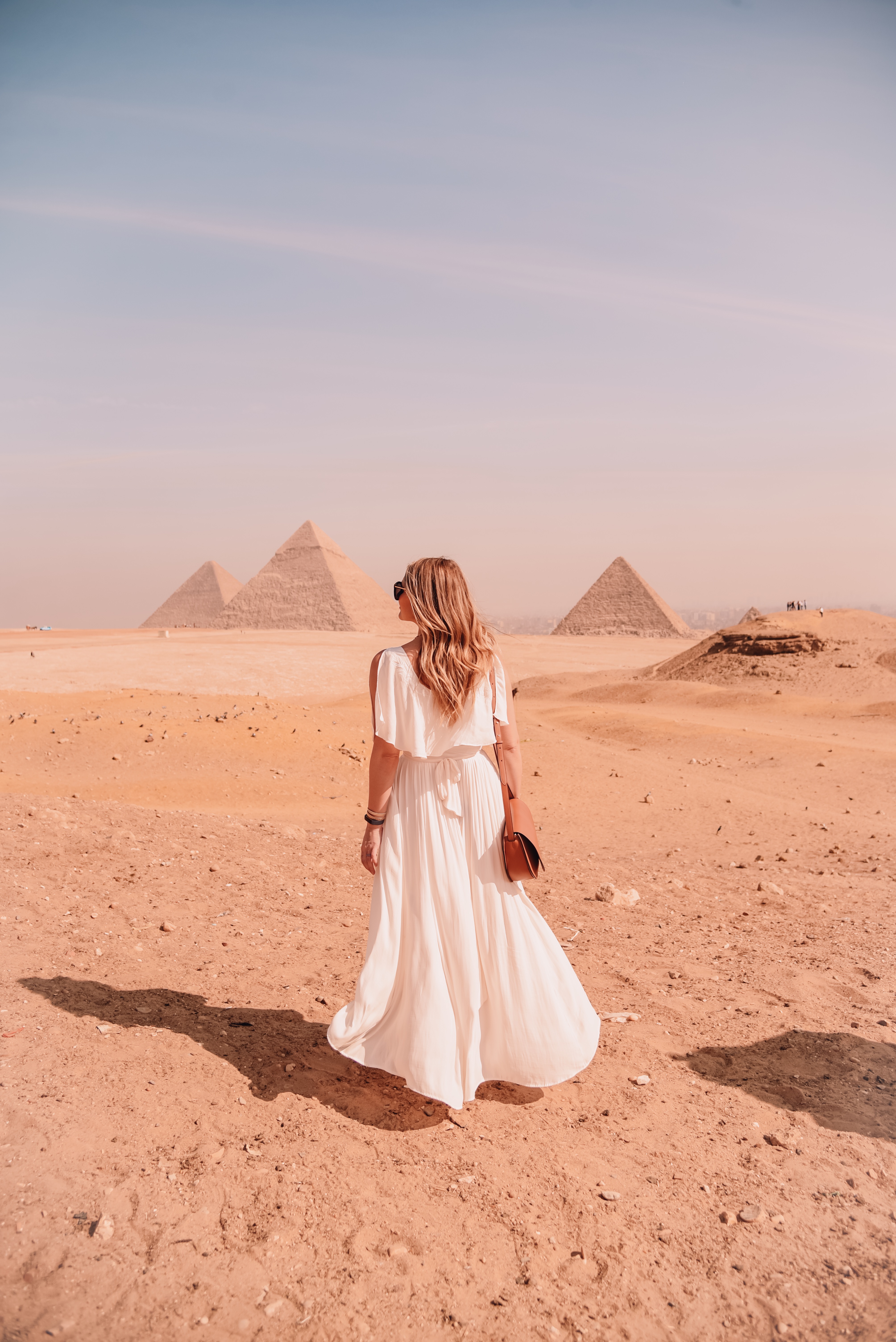
Our Itinerary
And now for the most important part! We started in Cairo, then went on to Luxor, and finished in Aswan. If we had to plan this trip again, I would do it in the exact same order.
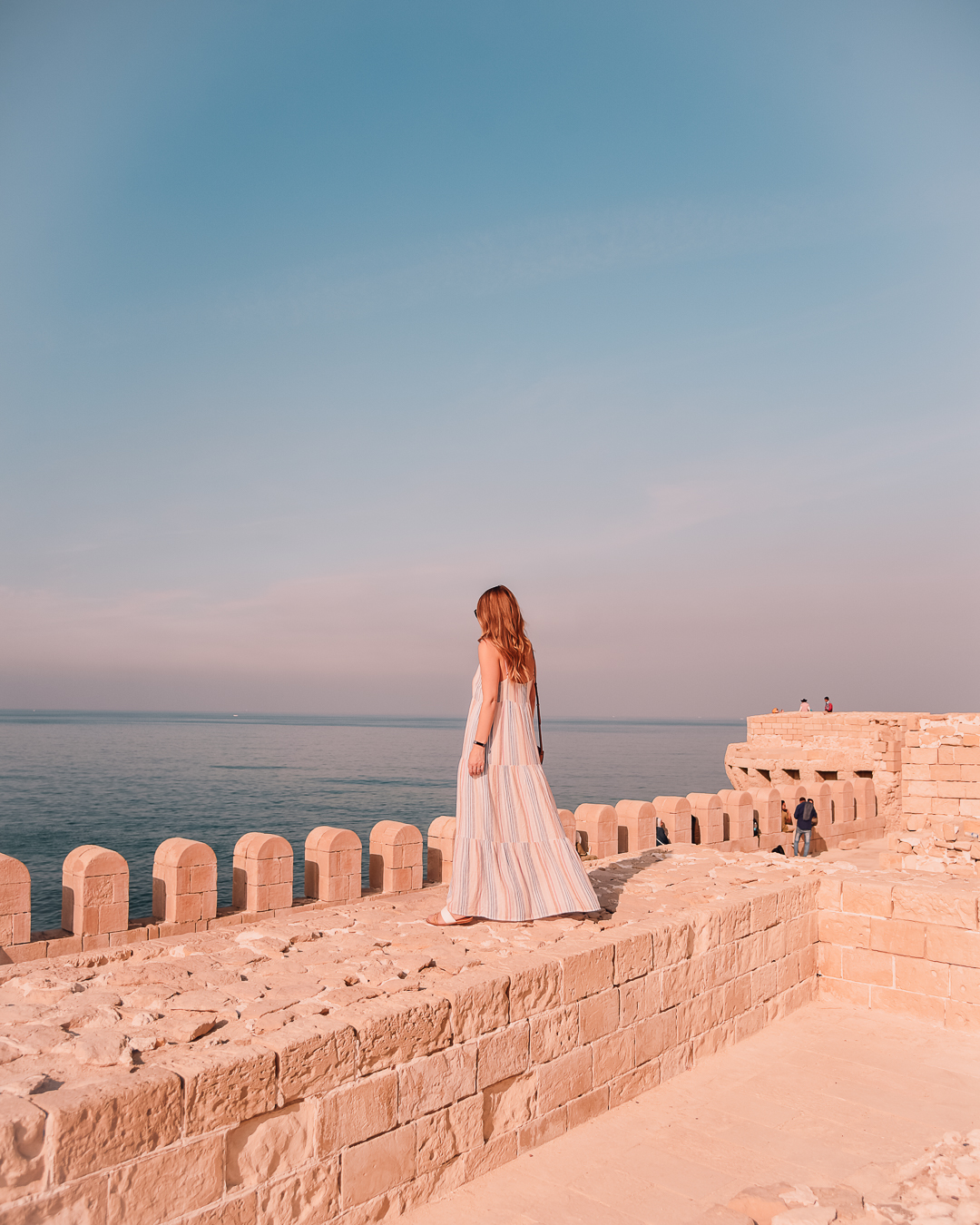
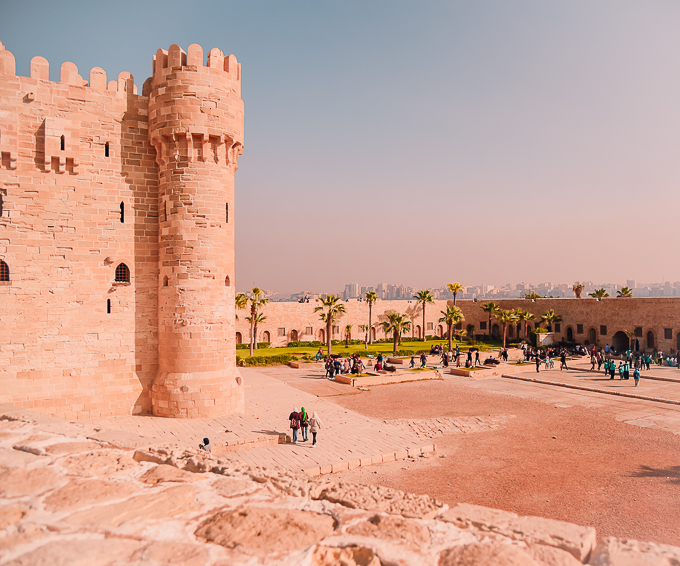
Day 1.
We arrived in Cairo at 8PM and checked into our hotel, Fairmont Nile City. It was a nice hotel and the rooms were about $150 per night. Most of our group stayed at Steigenberger Hotel El Tahrir. It was another great option and probably a little more central to Cairo which made it more convenient if you are planning to venture out on your own. If you’re struggling to select hotels, read this post where Matt shares how to choose a good hotel. There are many options in Cairo.
A few things to know about Cairo before I dive in. It’s very densely populated and is largely full of low income neighborhoods. There are ~25 million people living there which is 25% of the population of Egypt. The traffic is constant given the high population and there’s quite a bit of pollution/dirt in the air. Giza is why most people go to Cairo!
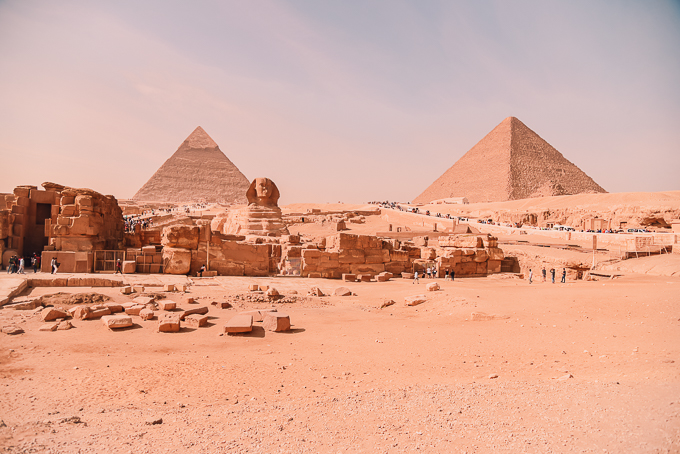
Day 2.
Since the rest of our group was coming into Cairo the day after, we decided to do Alexandria on this day so we could maximize the time we had with the rest of the group. We hired a driver and tour guide through Bes Egypt Tours to give us a day tour for $143 total which included lunch, water, and snacks. The drive is about 3 hours each way but on the way there, it took 5 hours. There was a sand storm which caused the government to shut down the freeway for an hour. Apparently, they have had many issues with large accidents (think 50 car pile ups) so I’m glad we got off the road. We stopped at a rest stop where we got to sample Turkish coffee and local Egyptian bread while we waited.
We left at 7AM and returned just before 8PM. We ended up eating dinner at the sushi restaurant called Saigon in our hotel which was pretty good! If you’re looking for a great place to watch belly dancing and grab a few cocktails, I’d recommend Bab El Nil. You can also try Carlo’s Le Pacha 1901 if you’re looking for somewhere to eat in Cairo!
In hindsight, I would say you can probably skip Alexandria if you are short on time. It’s a lot of travel time and while it was interesting to see the Greek influences, Cairo, Luxor, and Aswan were more fulfilling in my opinion.
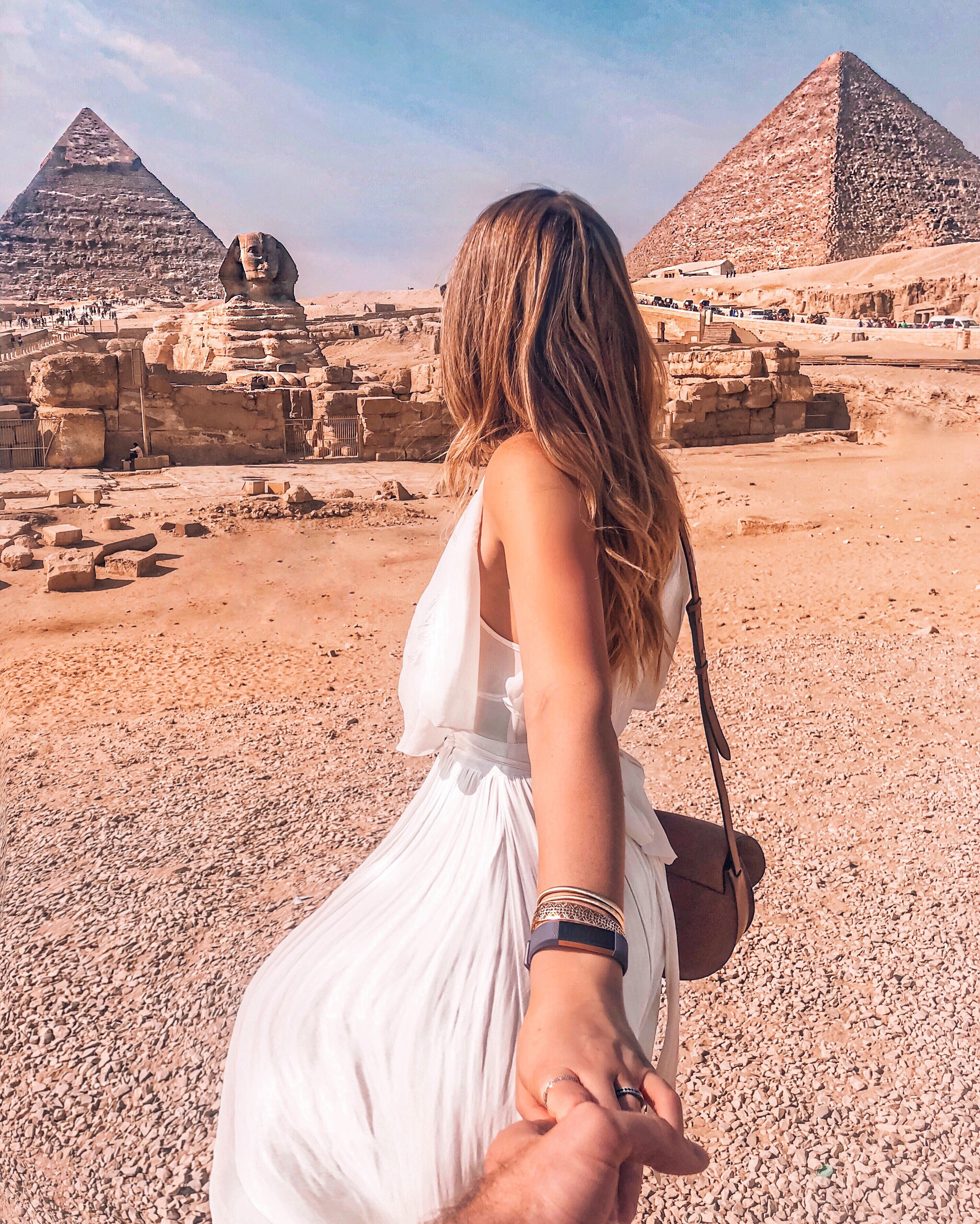
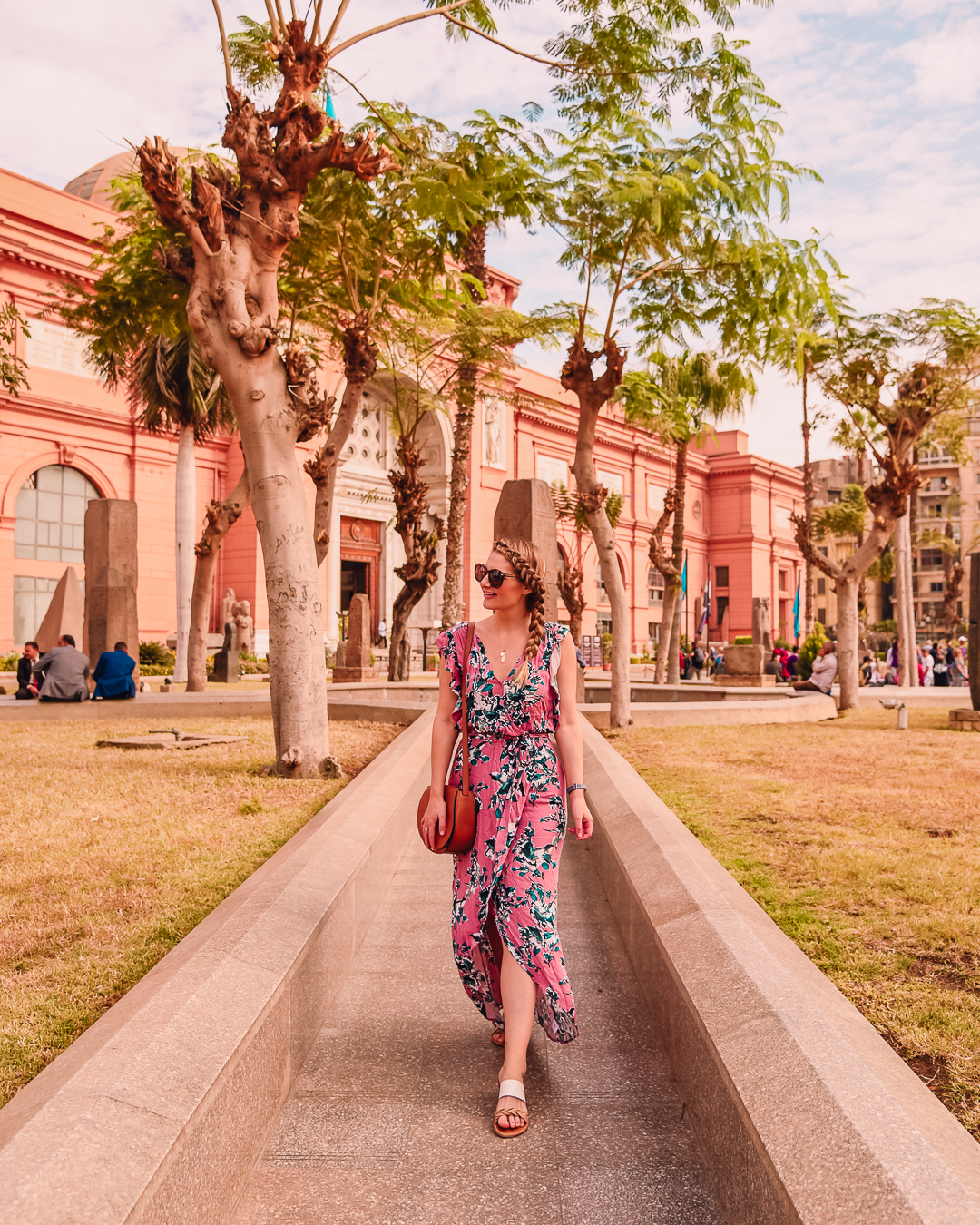
Day 3.
This is the day we saw the pyramids! We all met at our friends’ hotel in order for Let’s Explore Egypt to pick us up in one spot! This was probably the most affordable tour and was the best value during all of Egypt. It was under $35 for a half day tour which felt like we got a full day tour! Our tour guide’s name was Heba and I would strongly recommend booking with her. She spoke great English, was very personable, and made sure we were happy every step of the way. WhatsApp is very popular in Egypt and for coordinating tours so if you want to message her directly, her number is 00201008912598 or you can message her on Instagram. That way, you can be sure you get a tour guided by her. We had such a good experience with Heba!
Here’s what the tour included.
- Pick up at hotel
- Pyramids – If you want to enter the first pyramid, it’s an extra 360 LE which is roughly $20 USD. It’s basically a dark empty room with one sarcophagus so there isn’t a lot to see but we did it because it’s probably the only time in our lives we will go inside a pyramid. The tunnel up to the room is a little small and you do have to crouch over at points. If you are highly claustrophobic, I wouldn’t recommend it but otherwise you should be fine even if you are a little uncomfortable in small spaces.
- 30 minute camel ride (we took the first photo in this post on this tour)
- Sphinx
- Visit to Topaz Bazaar. This is where I got my gold cartouche necklace! They carry so many different souvenirs (just take a look at their website) but the necklaces were by far my favorite part. It is possible to order them online here and shipping apparently only takes a week! The website is more about the store versus being an online retailer so it might be easier to just email the owner (I asked him if it was okay to share his email address with you guys). His name is Ramy and his email address is Ramy-zakaria@hotmail.com. Everything is real gold or real silver and the store has a certificate of authenticity basically saying they aren’t allowed to produce anything that isn’t pure. The prices are based on the metal and the size. Here is a rough guideline of prices:
Silver Cartouche: $30 USD
Silver Cartouche with Gold letter: $90 USD
Gold Cartouche with 4 letters: $175 USD
Gold Cartouche with 6 letters: $225 USD
Gold Cartouche with 9 letters: $275 USD
- Visit to Siwa Perfumes. If you are into essential oils, you’ll love this part. This is where we got to smell everything and test out essential oils which are really big in Egypt. We learned so much about what each oil is used for health wise. We also learned that a lot of the perfumes sold around the world have Egyptian essentials oil blends as a base. You will get a more concentrated blend by buying them in Egypt and it’s cheaper than perfume prices here.
- Visit to a Papyrus factory. We skipped out on this piece because our group was pretty jet lagged. I’m really happy with how it turned out!
After our tour, we went back to the Steigenberger Hotel El Tahrir and grabbed a late lunch with everyone (it was about 4PM by this time). The food wasn’t particularly amazing but it was convenient. After that, we sat by the pool at the hotel. That night, we went to Khan Al-Khalili.
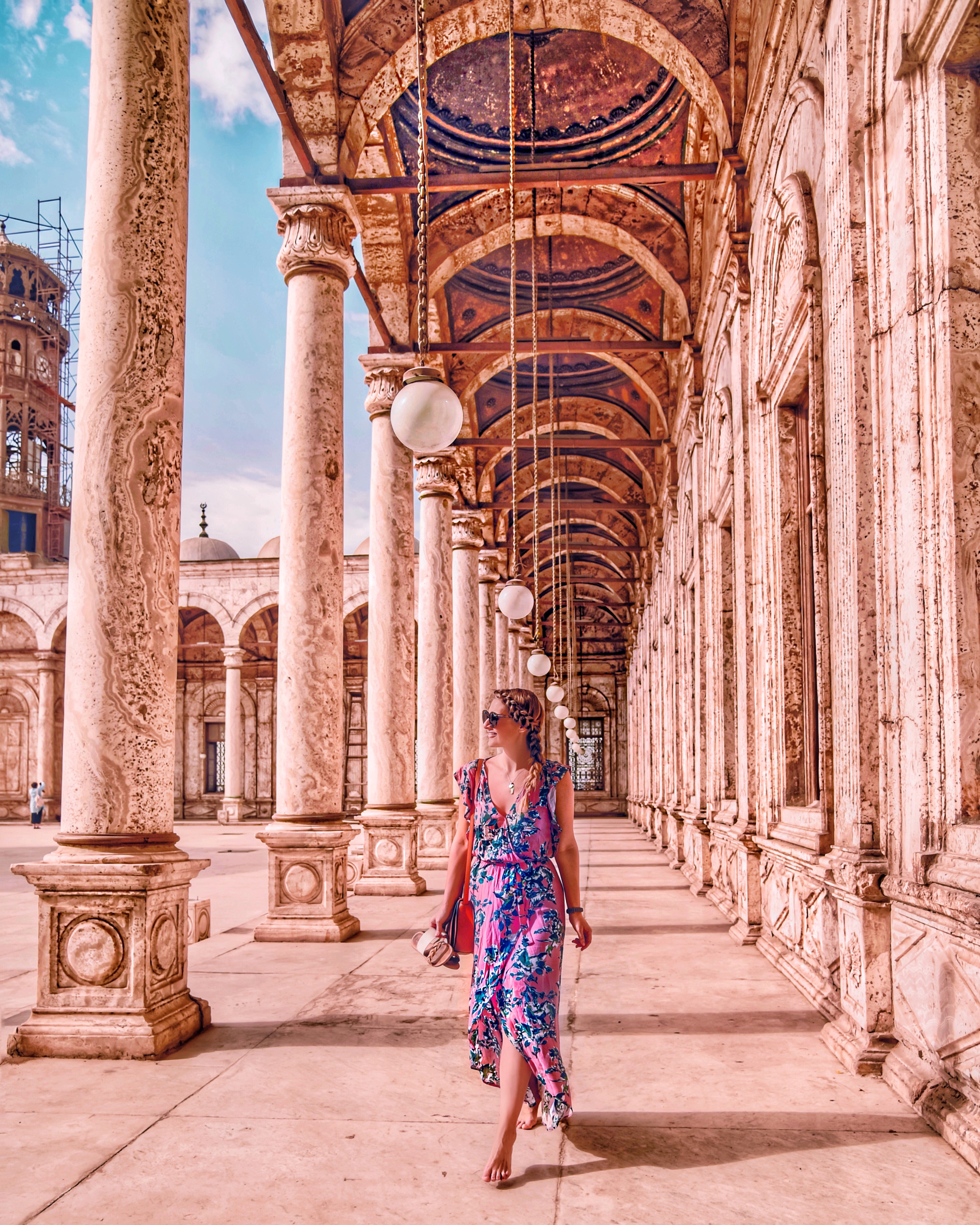
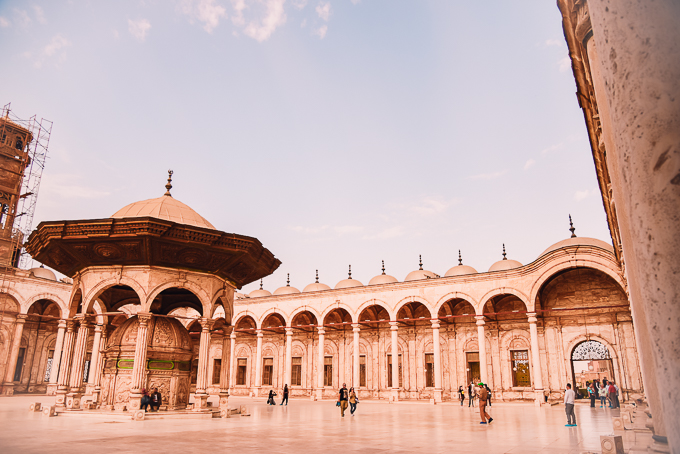
Day 4.
We went to the the Grand Egyptian Museum during the morning and spent a few hours there. The regular ticket was 160 LE or $7 USD. However, we opted for the mummy rooms which were 180 LE separately. I want to say the combined ticket was 360 LE. This is the museum where King Tut’s mask is housed as well as the artifacts from his tomb (his mummy and actual tomb are located in Luxor). There were so many artifacts all over and it was amazing how most of them were completely out in the open (i.e. you could touch them). We didn’t opt to have a tour guide for this and I feel like it was the right decision. I’m very glad we decided to do the mummy rooms because it was one of the highlights of the trip. Just a heads up, they are opening a new museum to replace this in late 2019!
If you’re hungry for lunch, try Zooba.
After the museum, we went to the Mosque of Muhammed Ali and the Cairo Citadel which overlooks all of Cairo. One thing that surprised me was how brown the city of Cairo was architecturally. You’ll see that from this vantage point! There is also a museum on the property and another mosque. The entry fee is 50 LE.
After the mosque, we tried to go on a sunset tour of the pyramids with a guide that our hotel arranged. Turns out, that wasn’t such a good idea. It ended up being a bit of a scam. We were quoted over $100 USD for the camel ride when our tour guide dropped us off (yes, that’s 3x the price of the entire tour from the day before) and we completely missed the sunset for the most part. They also took us through the slums to see the pyramids which was eye opening but might not be the best experience for everyone. In hindsight, I would have had Heba (the tour guide from the previous day) arrange this for us. She offered but in the chaos of ending the tour, we just didn’t finalize the details.
After this experience which was a 5 hour saga, we weren’t really hungry for dinner especially since we had to get up early for a flight. If you don’t feel like going back to the pyramids, I’d substitute Saqqara in during this afternoon and would hire a tour guide (Let’s Explore Egypt and Heba arrange tours of pretty much everywhere in Egypt if you want consistency and a reliable tour guide).
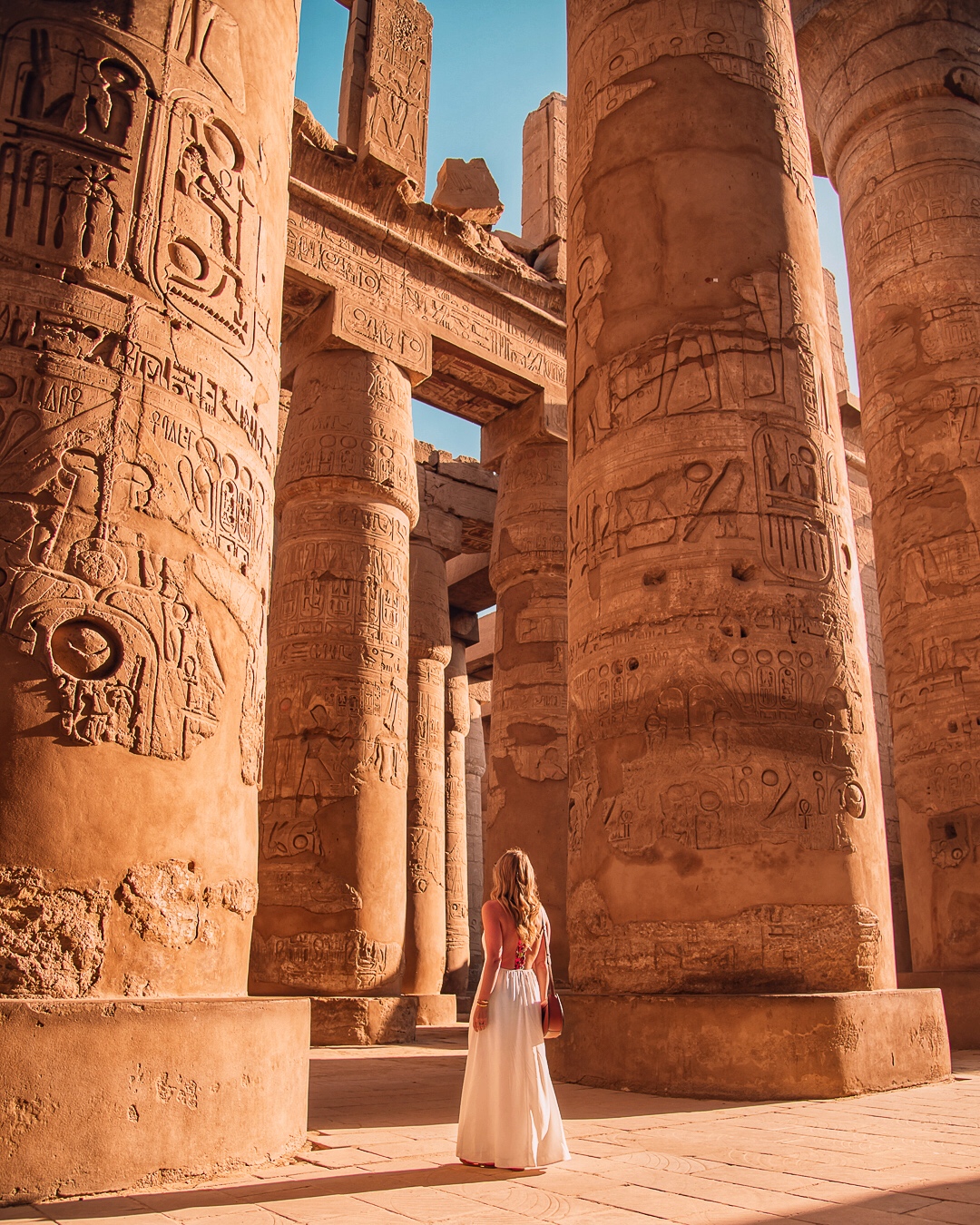
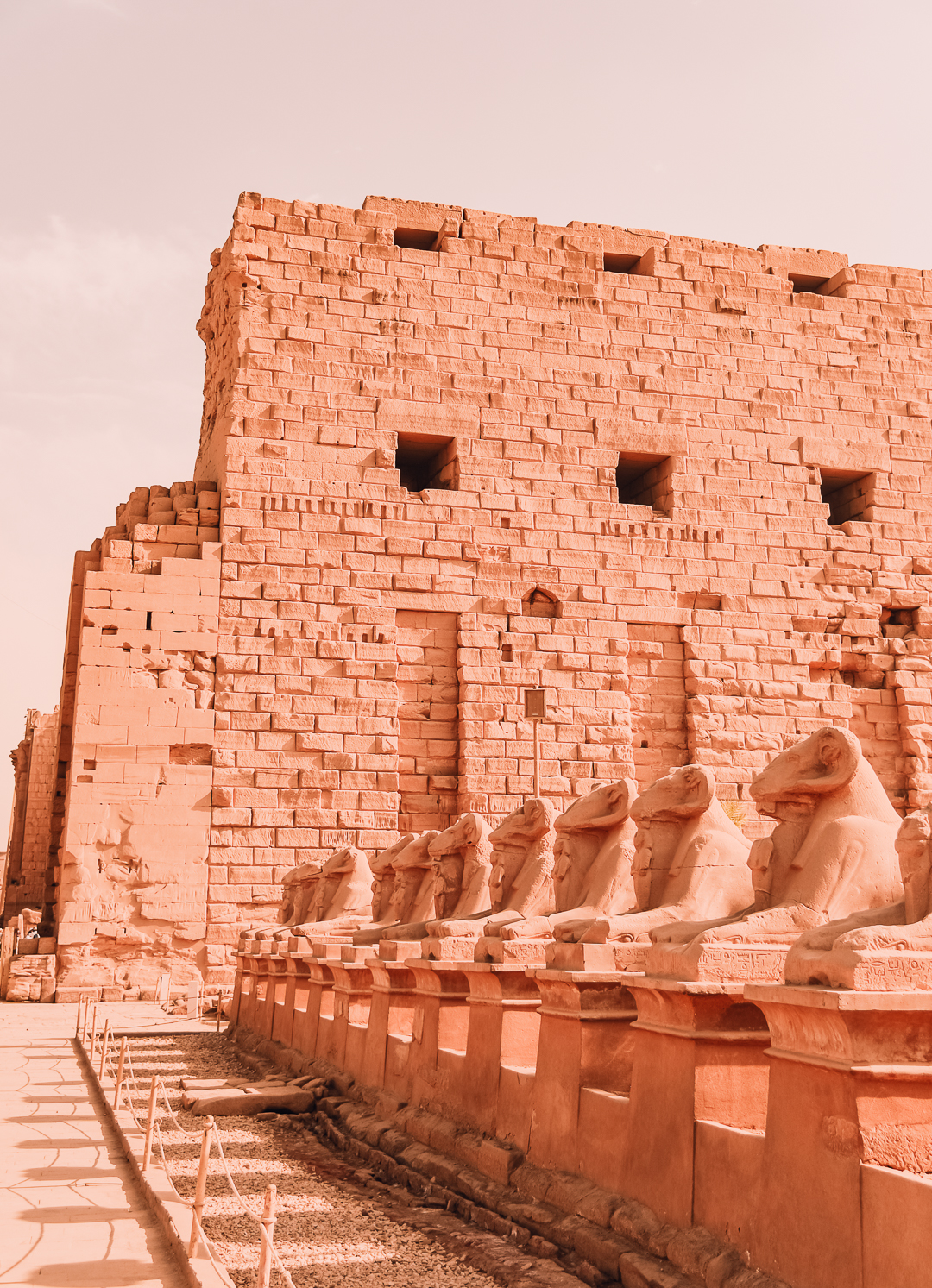
Day 5.
We left for Luxor first thing in the morning. It should cost you about 150 LE from the airport to the Hilton. We checked into the Hilton Luxor Resort & Spa and had breakfast with part of our group who were in Luxor for the day! This was exactly what we needed. The hotel was pretty nice, reasonably priced, and an oasis in the desert. We sat on the Nile for an hour chatting before we met another tour guide that was to give us a tour of the East Bank.
Matt booked a private 2 day tour in advance – one day for the East Bank and one day for the West Bank. It was about $280 which in hindsight was outrageously priced for Egypt after our experiences in Cairo. I would definitely recommend doing Luxor without a tour guide. You don’t need one. The value just wasn’t there especially when you can hire a taxi for 1/10th the price and have the same experience. The taxi prices to each site are displayed in the lobby of the Hilton.
We read online that you need one day for the West Bank and one day for the East Bank which is why we did this 2 day tour but you could do this all in one day especially if you move fast like we do. Since we were with a tour guide, we stuck with the plan and did the East Bank on the first day. We visited Temple of Karnak and Luxor Temple with our tour guide. The entry fees were included within our tour price. Karnak Temple was 150 LE and Luxor Temple was 140 LE. Karnak Temple was probably my most favorite part of the trip! This is where we walked around the scarab 7 times counter-clockwise for good luck!
There is also a sound and light show at Temple of Karnak at night which is an additional cost. I heard this show and the one at the Sphinx were a little gimmicky so we didn’t do any of these. Instead, we met the rest of the group for dinner back at the hotel.
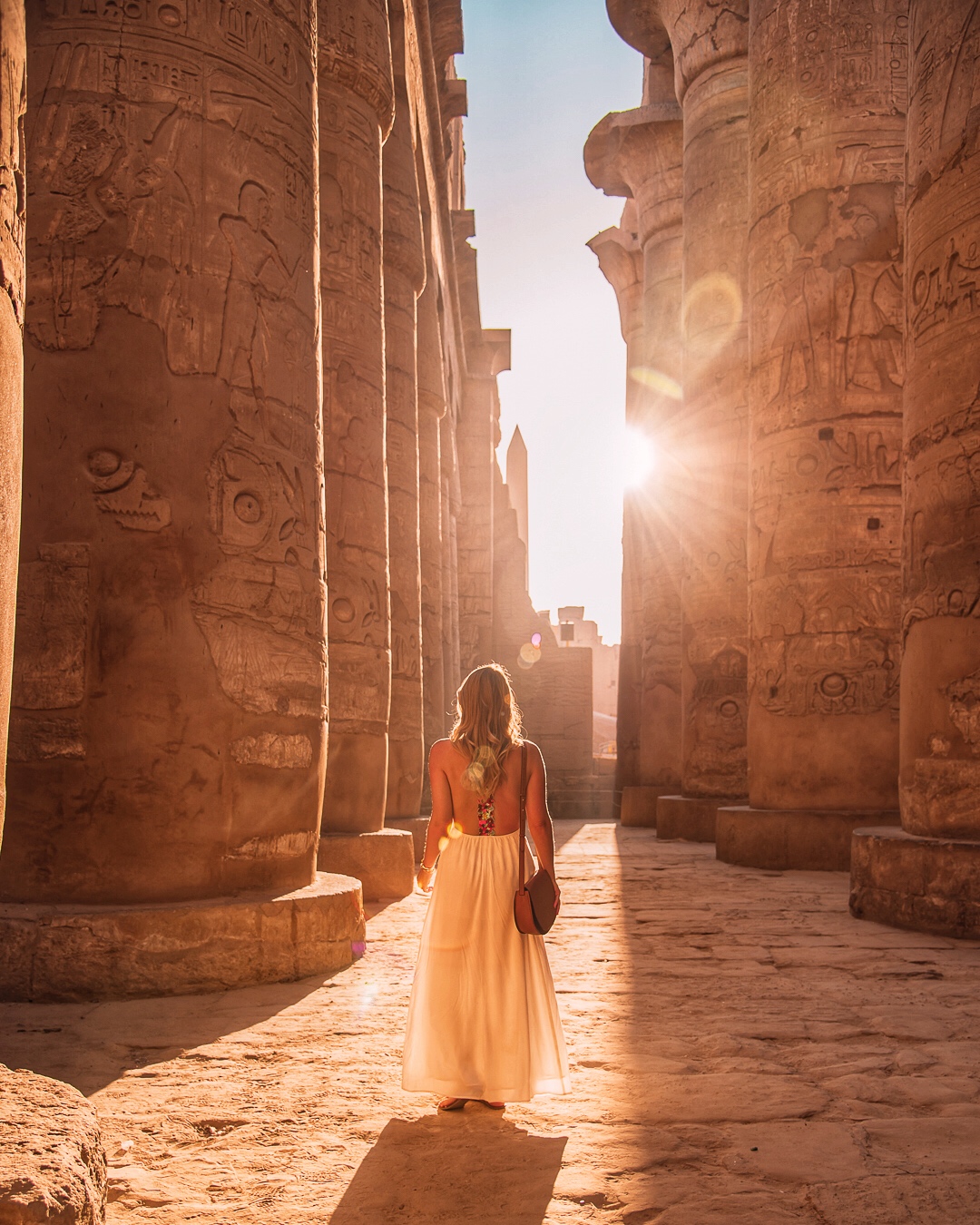
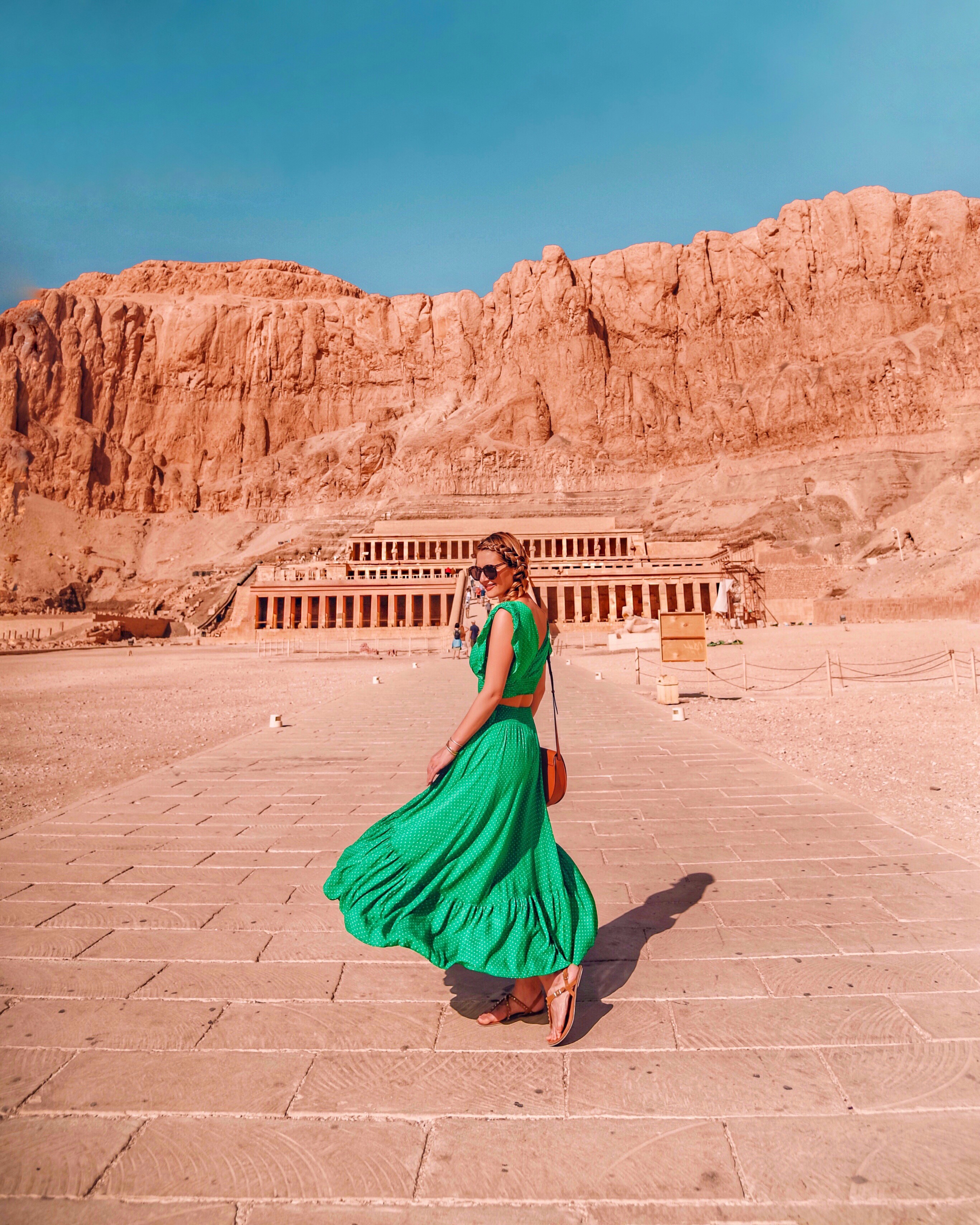
Day 6.
We woke up really early for the second part of our tour which was the West Bank. This is where all of the tombs were and was one of the most interesting parts for me. We headed to the Valley of the Kings first where 62 tombs of Egyptian Kinds have been unearthed. Only about 10 were open at the time. The entry fee was 200 LE and the electric train was 4 LE. However, if you want to go into King Tut’s tomb, it’s an extra 100 LE. The tomb is probably the smallest one we’ve seen but King Tut’s mummy was inside and after hearing so much about him in history class, I really enjoyed it.
Note that you aren’t allowed to take photos in the tombs unless you buy a camera ticket for 350 LE. If you get caught, you can try to bribe the guards with 20 LE here and there but they are smart and will ask you for 100 LE. If you’d rather not deal with the hassle, either buy the camera ticket or don’t try to take photos. It’s very heavily regulated and there are several guards throughout each tomb.
Seti 1’s tomb is 1000 LE which we opted to skip. Apparently it’s very beautiful inside with tons of original artifacts and gold still inside the tomb. Since I was more interested in hieroglyphics and seeing the tombs, I didn’t feel like we missed out by not going in.
We then went to the Temple of Hatshepsut (one of the few female rulers in Egypt). The entry fee was 50 LE. There wasn’t as much to see here but I like female rulers of history!
After this, our guide tried to discourage us from visiting the Valley of the Queens saying that it wasn’t as glamorous as the Valley of the Kings. However, I really wanted to go so we asked to go. It was also included in the description when we booked the tour although he tried to tell us it wasn’t. It wasn’t as fancy as the Valley of the Kings since women weren’t as highly regarded as men. However, it was significantly less crowded and was a nice break from tourists. The tombs were just as beautiful for the most part too. The entry fee was 50 LE and you could buy entry to the tomb of Nefertari for 1000 LE. We skipped the upsell again because we didn’t feel like we needed to see it.
Lastly, we saw the Colossi of Memnon which was more ruins than a structure. It was a quick stop with no entry fee but fun nonetheless because it also wasn’t as crowded. If you find that you have extra time, you could see Medinet Habu and Ramesseum.
We got back to our hotel by lunch and spent the rest of the day lounging by the pool. Given that it’s the dead of winter in Chicago, we were quite happy to relax a little after all the hustle and bustle as well as get some Vitamin D. Not wanting to worry about negotiating with taxi drivers or if we would be able to find our way back, we tried a different restaurant at the Hilton. By this point in the trip, we kind of realized the food wasn’t the main appeal of Egypt so we didn’t try going out of our way to try restaurants.
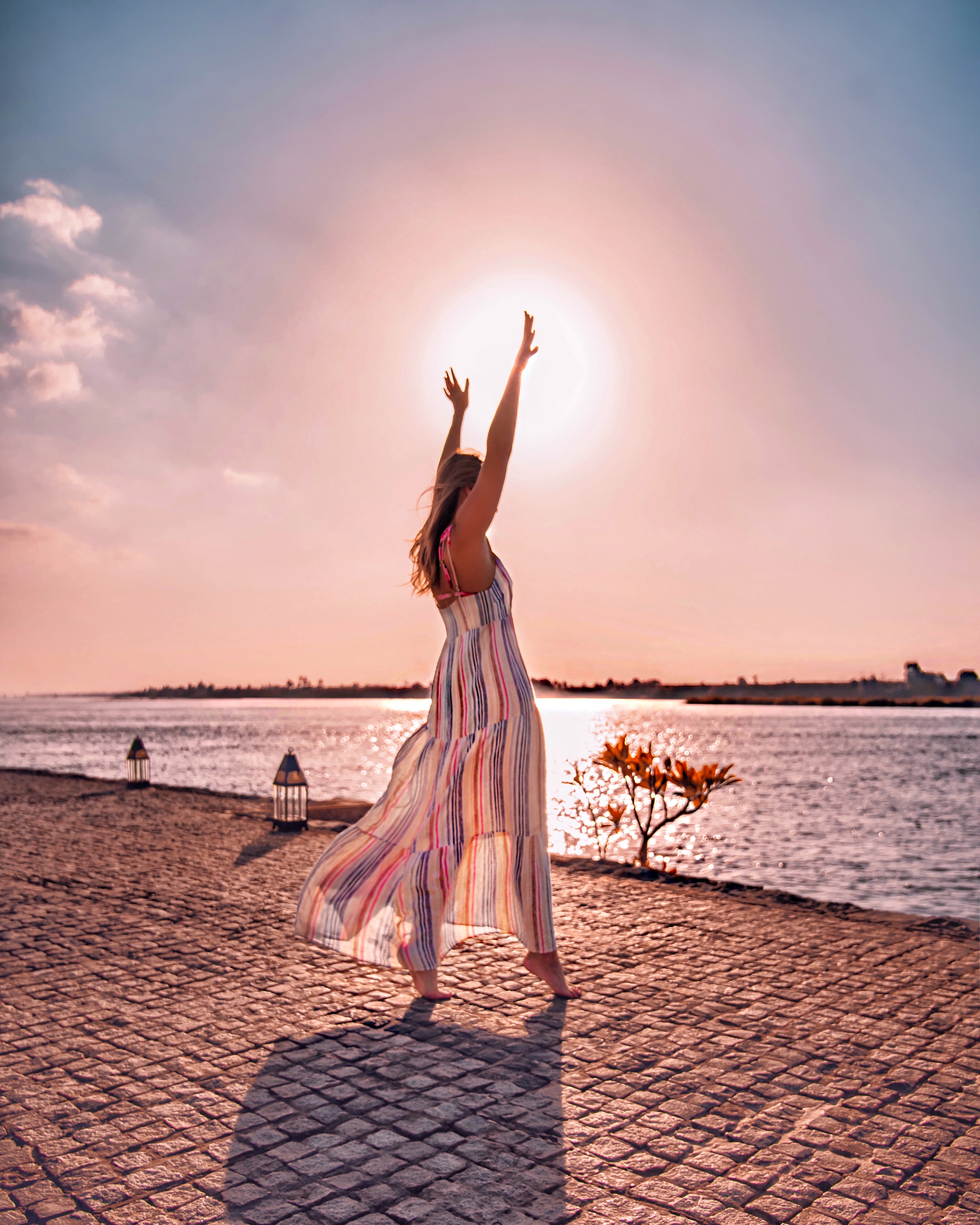
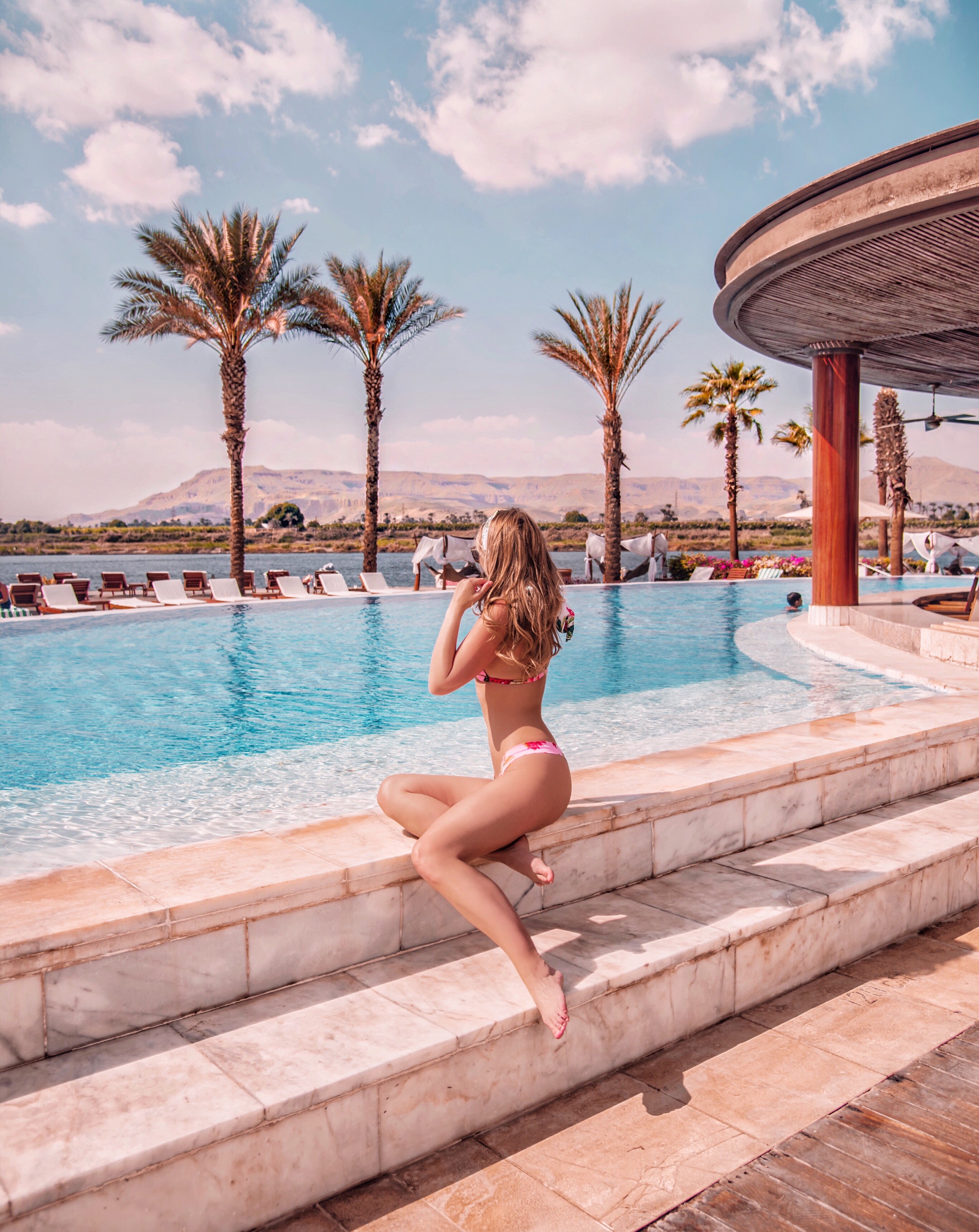
Day 7.
If you’re feeling adventurous, try a hot air balloon ride at sunrise. It should be about $50 USD. The balloons take off from the West Bank so it is a 45 minute ride from the Hilton. We opted to just watch them as a compromise between me and Matt. He told me we can go on a hot air balloon back in the states – just not in Egypt!
The next stop on our trip was Aswan. Since there were no flights to Aswan, we hired a private driver to take us there. As I mentioned above, it was a 3-4 hour drive and the drive cost under $100 USD. The car was clean and the driver was very professional. There were so many speed bumps along the way that it made it difficult to sleep and if you’re prone to motion sickness, be aware. It wasn’t bad by any means and it was better than taking the train. I’d be curious to see what the Nile cruises are like though! So many people we ran into were doing the Nile cruise!
Once in Aswan, we checked into the Sofitel Legend Old Cataract hotel. This was instantly our favorite hotel and city of the entire trip. Luxor was a step up from Cairo and Aswan was a step up from there. This is why I say the order in which we traveled through cities was the best choice. We grabbed a drink on the terrace while watching the feluccas (Egyptian sailboats). You could also take a sunset felucca ride around the Nile.
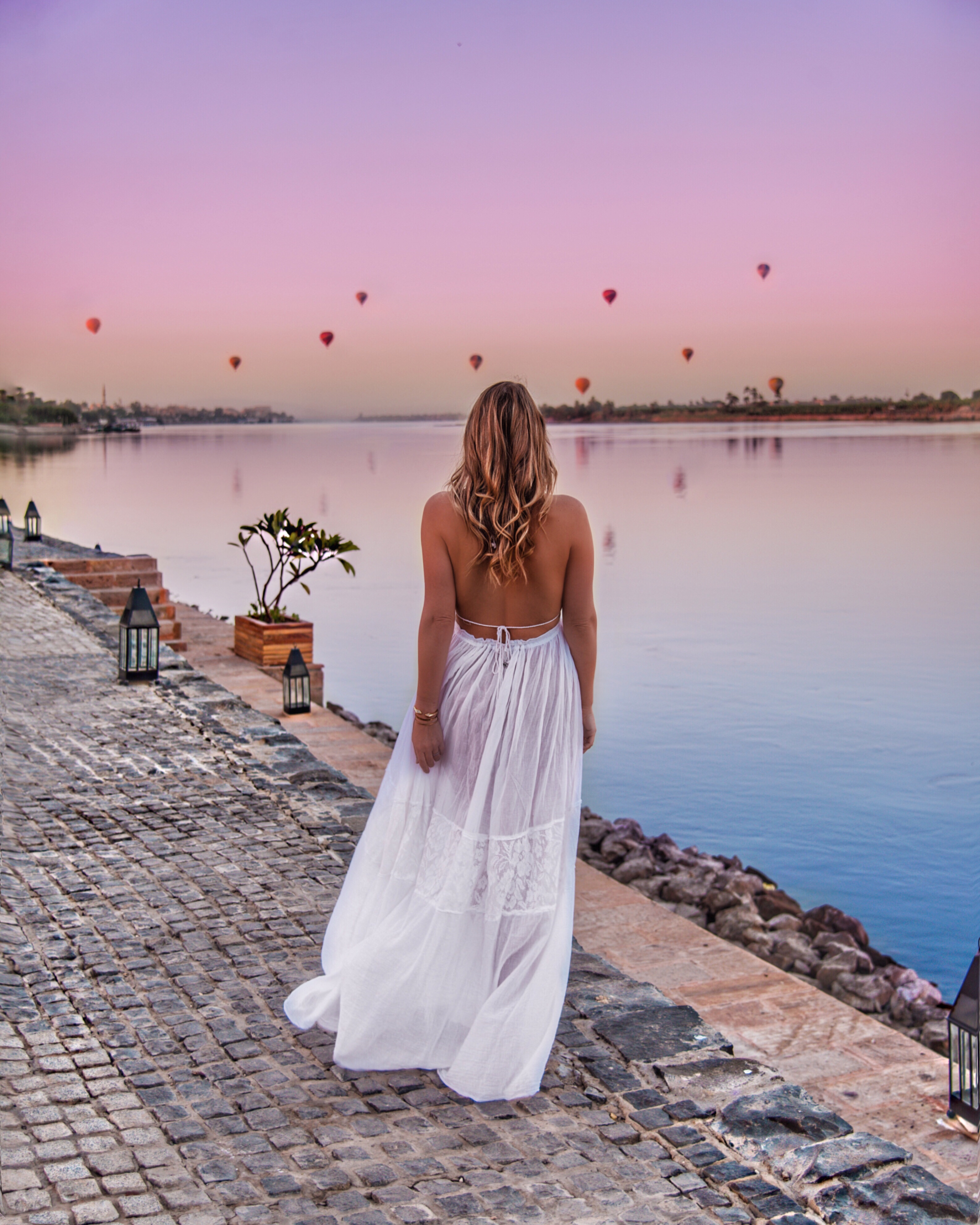
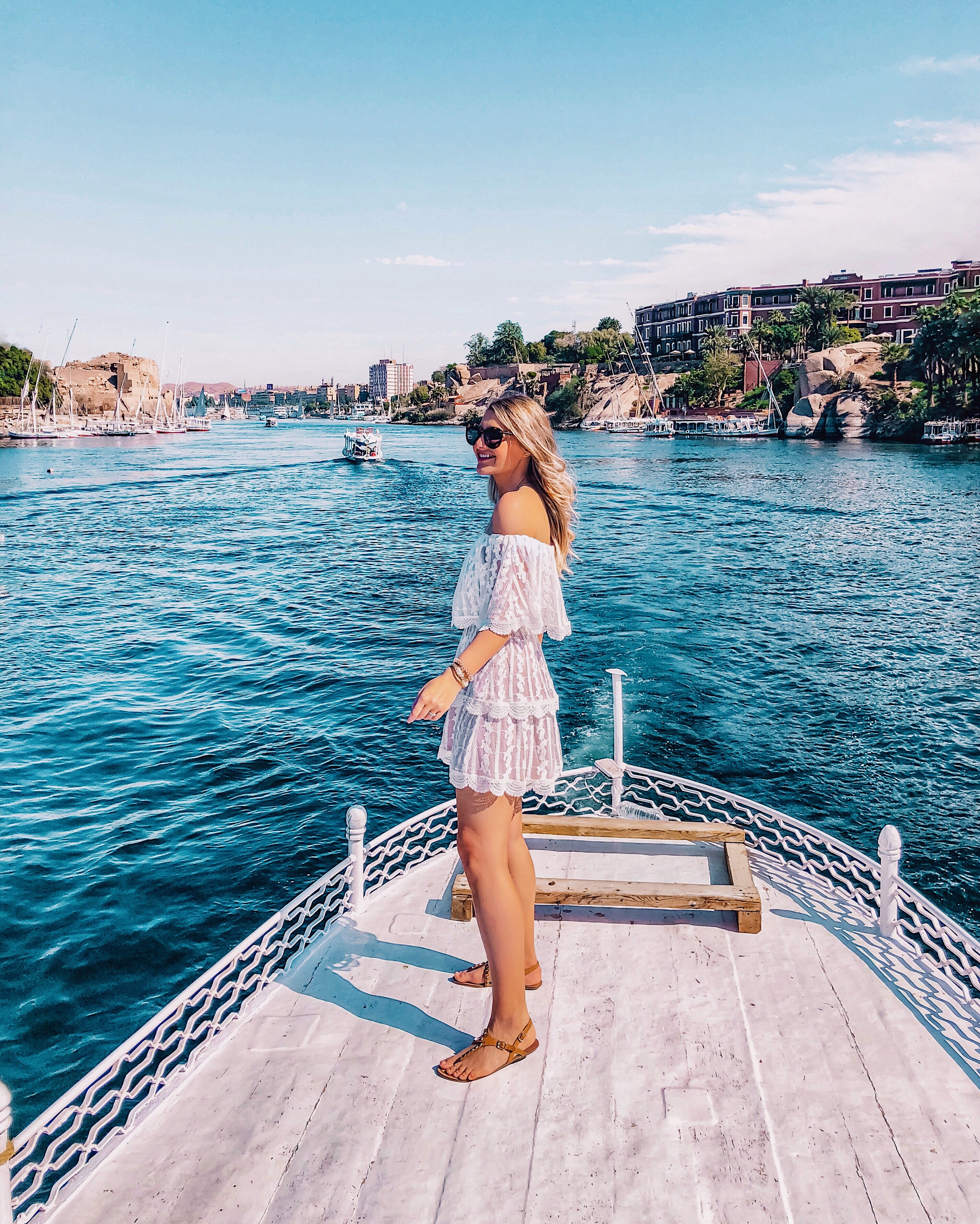
Day 8.
We flew to Abu Simbel first thing in the morning and landed at 7:40AM. It’s a 40 minute flight and it’s relatively easy. There are free shuttles from the airport in Abu Simbel which aren’t marked. Taxi drivers kept asking us if we wanted them to drive us to Abu Simbel until we figured out where the shuttles were. It isn’t worth paying a taxi or a private tour guide. The ride is really quick and you don’t have to wait that long for your fellow passengers since there’s basically only one plane coming and going at any one time. There isn’t much for people to hang around and look at so people head to the shuttles pretty quickly.
Abu Simbel was high up on the list in terms of our favorite places. There are two temples side by side and they were the best preserved temples we saw during the trip. It’s right on the water too so it’s quite serene. Given how remote it is, we were surprised by how many people started showing up within 30 minutes of us arriving. If you want to beat the rush, take the earliest flight out! You can also get there by car or tour bus but the flights were so easy and relatively affordable that it was worth it to us. We also knew that we could leave our stuff at our hotel in Aswan so this worked out for us. We went back and forth with trying to do Abu Simbel last before flying directly to Cairo. However, figuring out the logistics of luggage was too much so we treated this like a half day trip that happened to involve some flights.
You can only stay in Abu Simbel for a few hours so we flew back on the 10:40AM flight.
For the rest of the stay, you can visit Temple of Philae for an entry fee of 140 LE. It’s convenient to do this on the way back from the Aswan airport as the Aswan airport is a 30-40 minute drive from the Old Cataract hotel. At this point in the trip, we were a little burnt out on temples so we headed back to the hotel to grab lunch. After lunch, it was already getting dark so we went down to the pool which overlooked the Nile for a little bit.
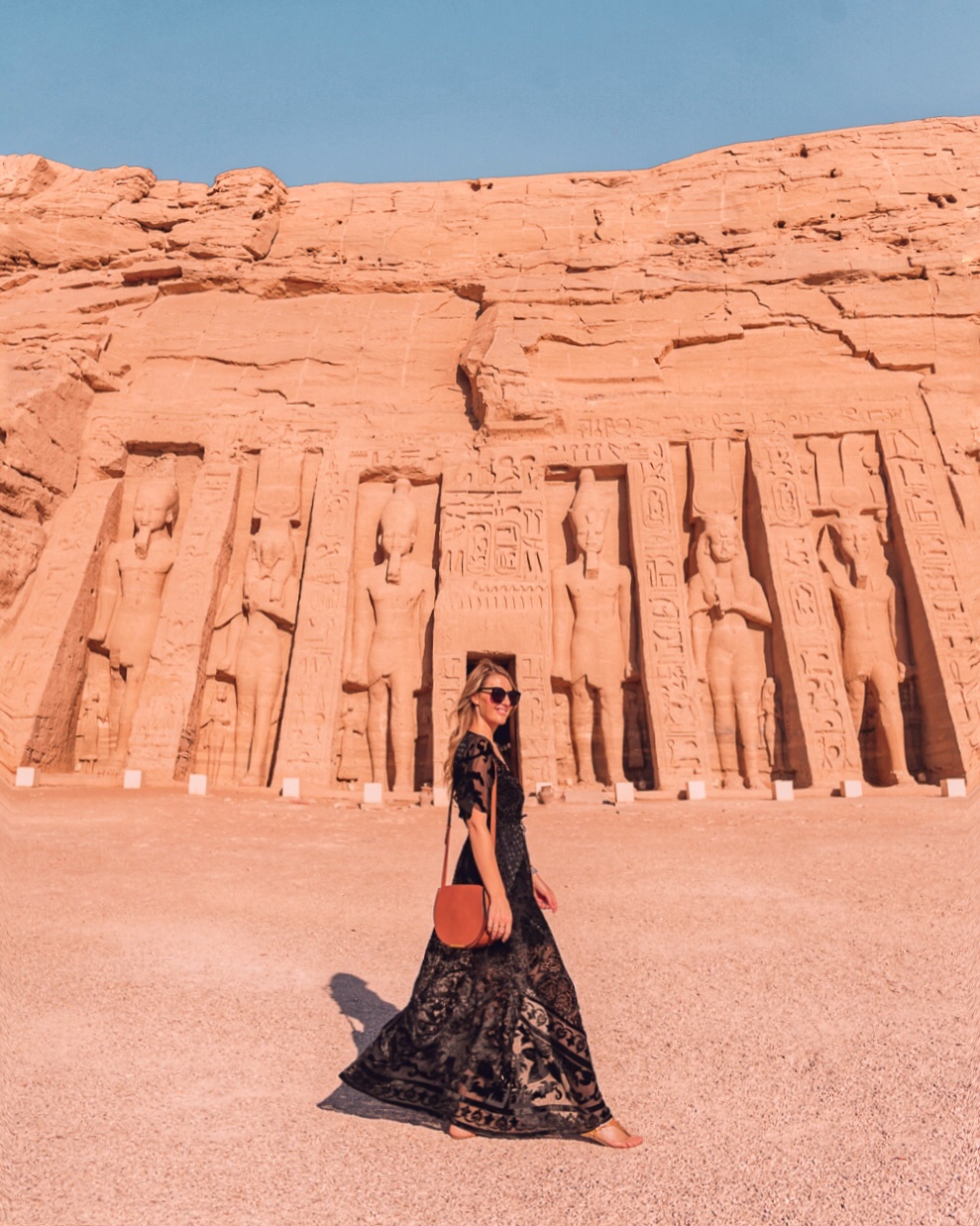
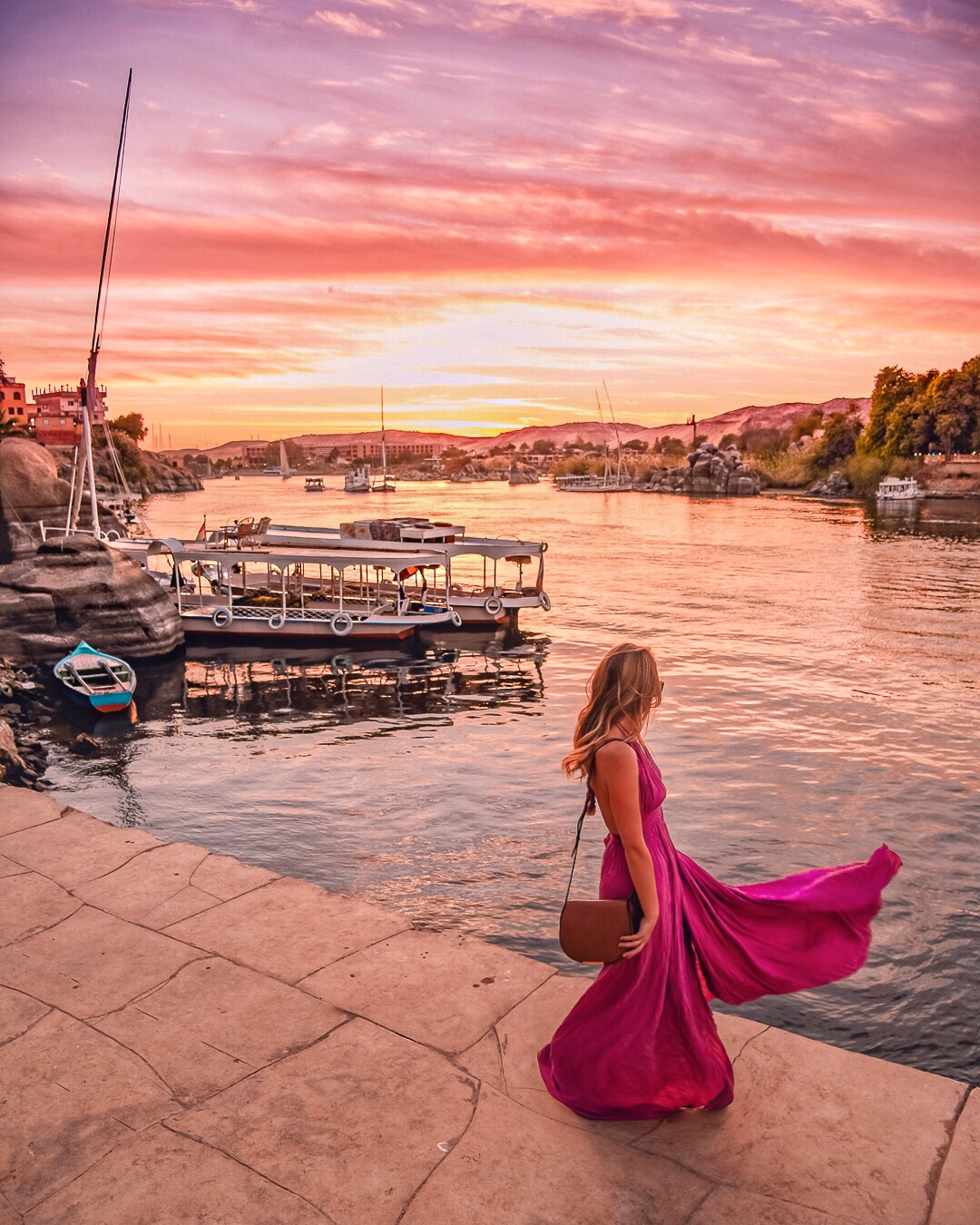
Day 9.
We had breakfast at the hotel this day and then took a boat to the Nubian village which is a cultural society along the Nile. You can take a boat or a felucca (felucca’s are lower priced but slower). If we had had more time, we would have taken a felucca! The ride on a boat was about 30 minutes. We spent about an hour at Nubian village – I wanted to go because of the architecture and colorful buildings. There are shops along the main port and a few cafes as well. This is a stop for many tours so there are a lot of salespeople along the walk ways.
After getting back to the hotel, we packed up and headed to the airport in Aswan. We arrived 2.5 hours early and the airport wasn’t open yet so they had us sit in the lobby. If we had known this, we would have done something else with this time! The airport is very small and there are often delays so just a heads up! We flew into Cairo and spent the night in a hotel that was near the airport. Our flight back to Chicago was at 7AM the next day!
Is Egypt on your bucket list? Do you have any other questions?
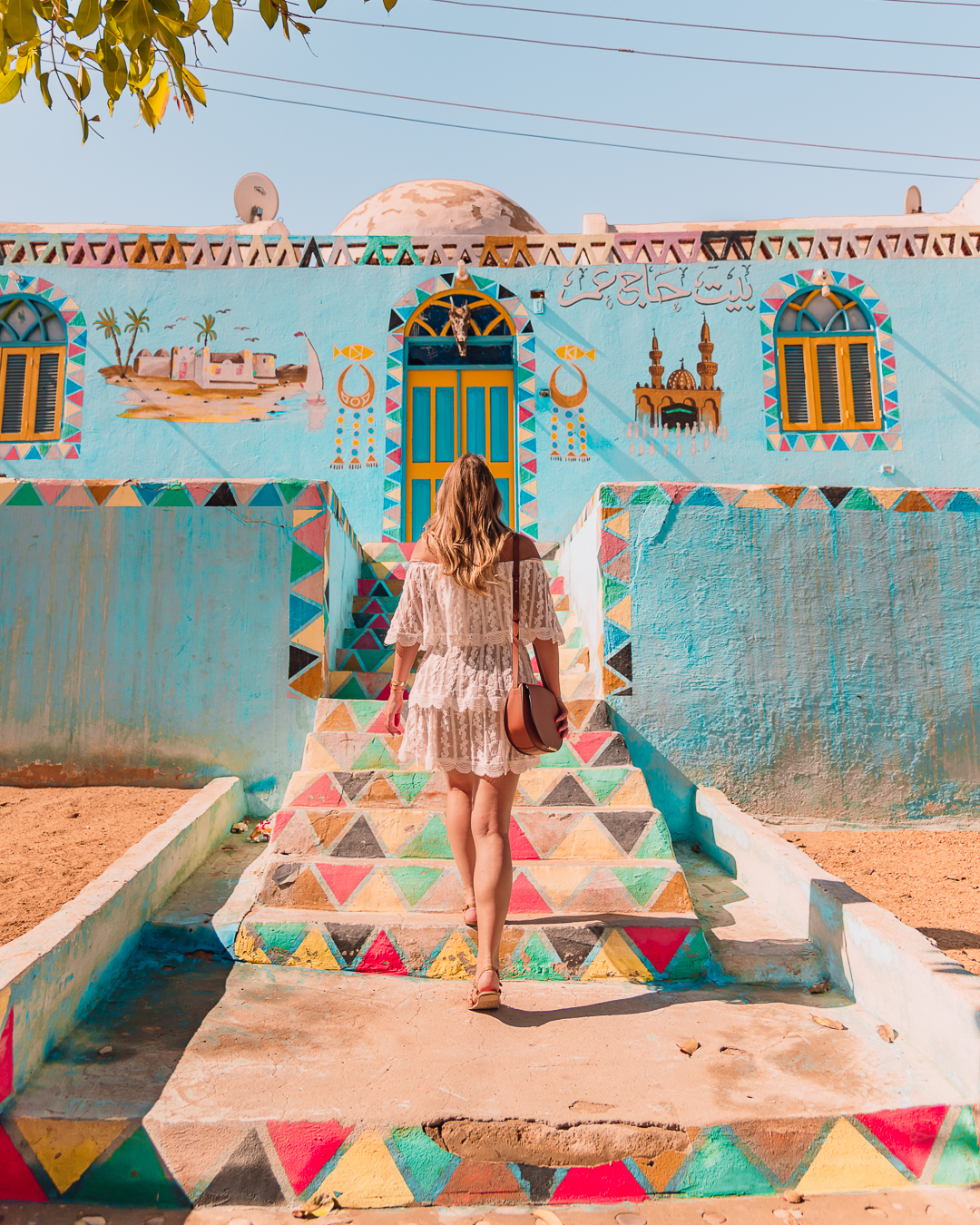
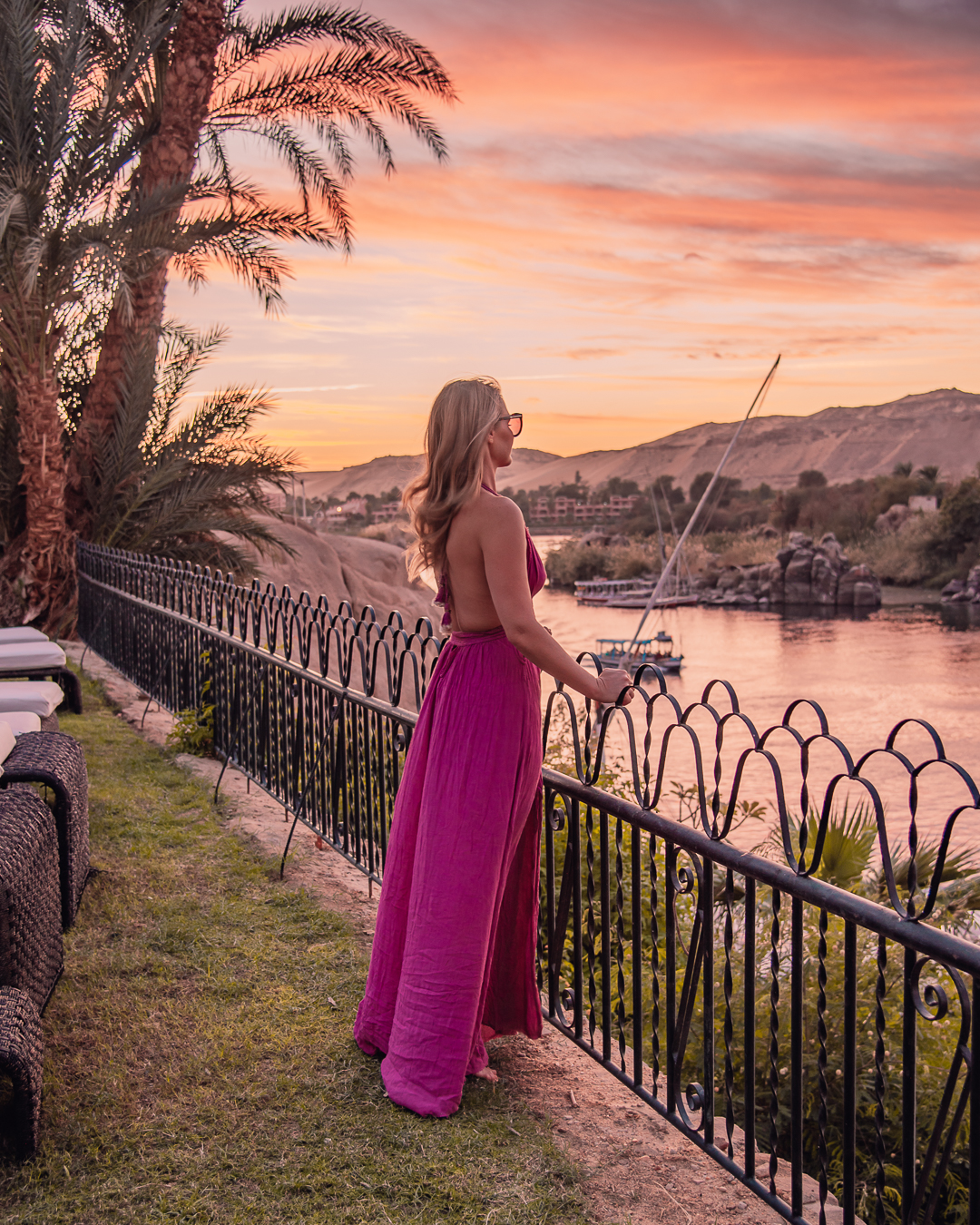
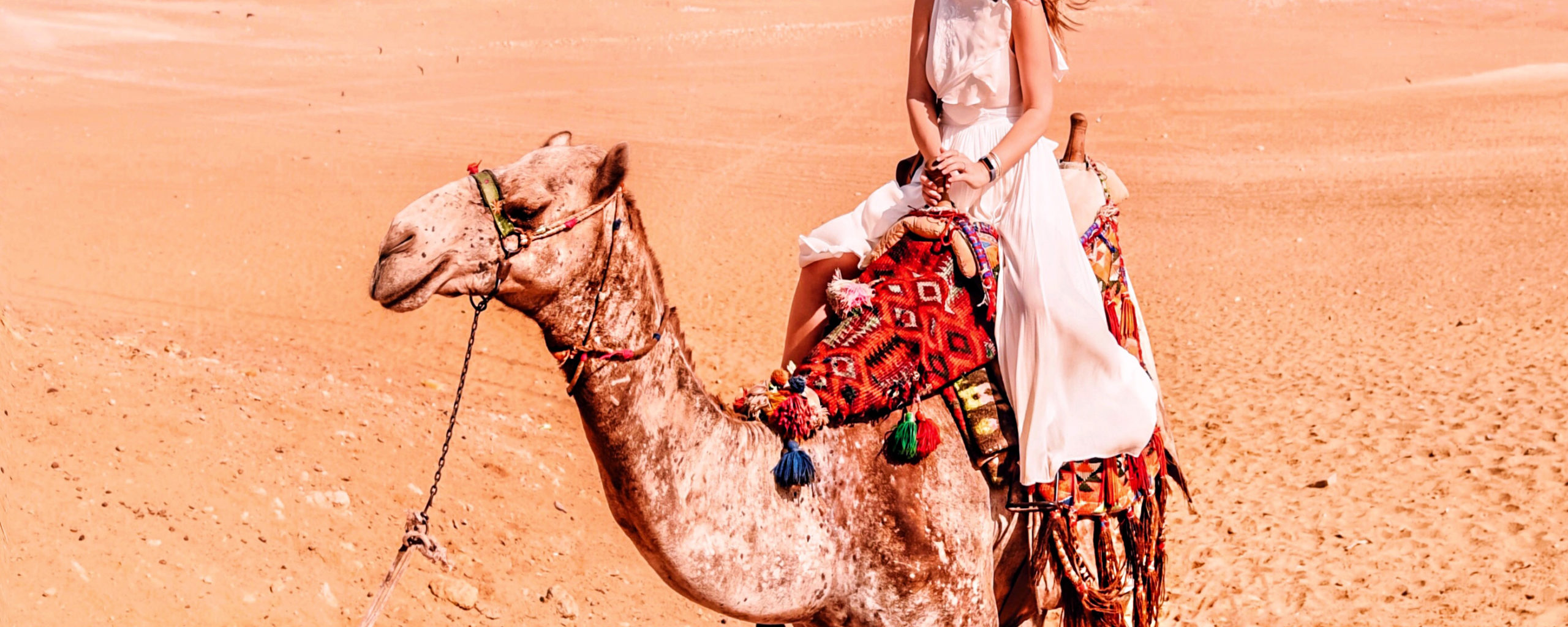

So so so amazing!
Thanks for the amazing travel guide! We just booked our trip to Egypt for March! Did you find that it was generally ok for women to wear sleeveless tops and shorts while in Cairo and Luxor?
Yes! It was fine!